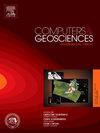Global mantle conductivity imaging using 3-D geomagnetic depth sounding with real earth surface conductivity constraint
Abstract
The water content in the Earth's interior is of great significance for material circulation and the dynamic evolution of the planet. The water content in mantle minerals significantly affects their conductivities. By measuring the variations in conductivity within the Earth, we can infer the water content in the mantle and study the movement and processes of materials within the Earth. The geomagnetic depth sounding is a widely used method for imaging the mantle conductivity as it has large sounding depth. However, the ocean induction effects can seriously impact geomagnetic data that can't be well corrected using conventional methods. Here, we present a novel three-dimensional inversion method for geomagnetic depth sounding to overcome the ocean induction effects by directly adopt the real earth surface conductivity into the inverse model. In this method, the unstructured tetrahedral grids are used to represent the model in multi-scale and the vector finite-element method is adopted to accurately compute the geomagnetic responses. The synthetic model tests show that the earth surface conductivity has serious effect on the inversion results, but it can be well suppressed by directly modeling it in the inverse model. We further invert the data from 128 geomagnetic stations around the world and obtain a more accurate new model of global mantle conductivity.

 求助内容:
求助内容: 应助结果提醒方式:
应助结果提醒方式:


